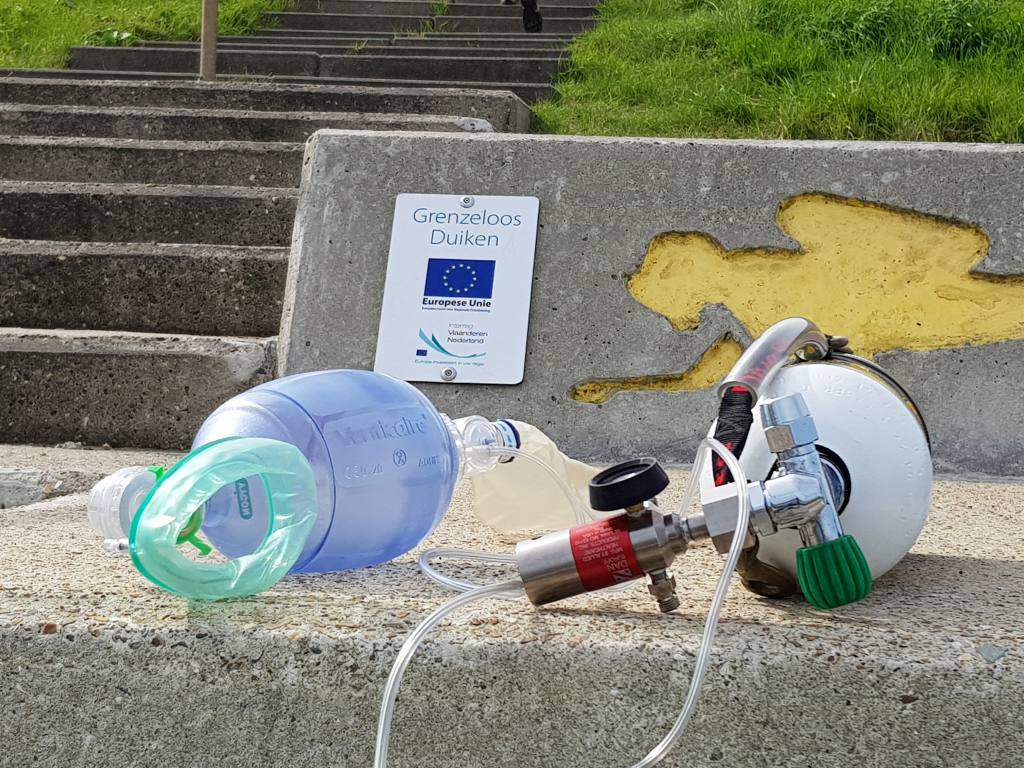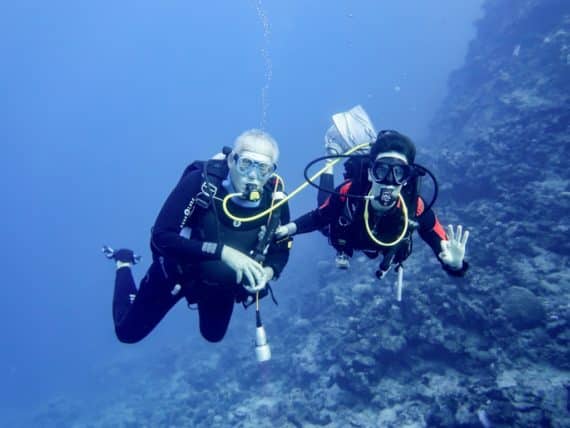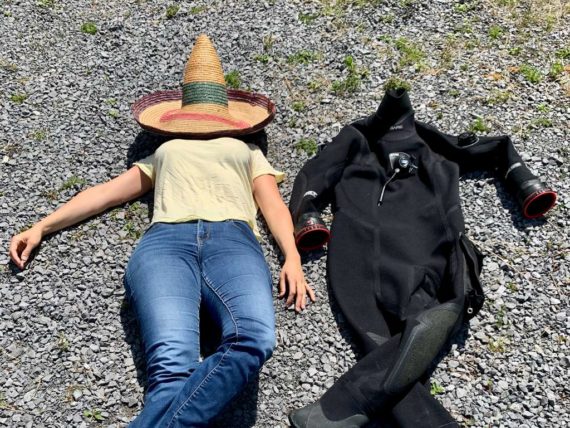Scuba diving: the day I found myself in an hyperbaric chamber

I remember very well that particular winter day.
I went to the hyperbaric chamber of the Queen Astrid military hospital in Never-Over-Hembeek on the outskirts of Brussels.
At the time, I had a level of autonomous diver up to 30 meters and a hundred logged dives.
Arrived at 9am, I was greeted by the nurse of the service, a diver that I knew by the way. He was waiting for me and a few others to get us into the meeting room next to the hyperbaric chamber.
Those who have already been there will understand that I had some apprehensions.
Fortunately, Pierre, the doctor specialized in hyperbaric medicine
Explained us briefly the stages of the experience in an hyperbaric chamber. (also called recompression chamber for the diving world) explaining the practical details essential to keep in mind: clear the ears, report if anything is wrong.
After these brief explanations, we enter the hyperbaric chamber looking like a small submarine. The recompression chamber of the military hospital can accommodate sixteen people sitting on comfortable turquoise removable seats. (I remember this color, but why ?? ). 4 stretchers or two medical beds plus the nursing staff.
The entrance of the hyperbaric chamber is made by a first airlock that serves as a buffer.
In case of a problem, this part of the hyperbaric chamber makes it possible to bring in or out people without stopping the process for those who would be inside the hyperbaric chamber. Did you follow me?
We take place in this impressive universe where, I must say, I do not feel quite comfortable.
And the process starts. Very quickly, the pressure is felt in the hyperbaric chamber. And we have to clear our ears making a Valsalva maneuver which we all master.
However, in this environment. I have trouble clearing my ears and I really start to worry because we continue to “go down”.
I tell the nurse that it is not ok and he signals to the doctor who stops the process.
As I do not have to be the only one to have this kind of reaction. They have planned everything and they give me a “chokotoff ” (Belgian chocolate candy) to help me, through chewing, to clear my ears before putting the machine back on the road .
I am afraid for my ears that have a hard time with the hyperbaric chamber and signals again that it is not ok.
At this moment the nurse asks me if I wish to leave the hyperbaric chamber with him by using the airlock buffer. But I choose the option of the second “chokotoff” and we continue our descent.
Finally, we arrive at our “depth” scheduled at -30m.
Big surprise: when we start to talk these are strange sounds that come out of our mouths. Somewhat similar to those we can have when we breathe helium (this famous “duck voice”). And that makes us all laugh a lot.
After a few minutes at this depth. We start to go back to the “surface”, this is much easier for my ear. And we find ourselves in the reception room of the recompression service of the hospital where we debrief about the experience before we say goodbye.
I guess you understood, I did not go to the hyperbaric chamber because of a diving accident but for a didactic visit to understand how a hyperbaric chamber works.
If I would gladly advise divers to live this experience in a learning condition just once, this very special dive did not make me want to come back in an hyperbaric chamber 🙁
Also, I do everything to never have an accident by focusing mainly on the prevention of diving accidents.
Have you ever been in a hyperbaric chamber ? Where ? For what occasion ?
And if you exchange with us your experiences via a comment directly on the blog, … it will be a pleasure to exchange with you live.
And above all … do not forget to be happy
Helene
[ READ ALSO ] these articles on the prevention of accidents in scuba diving
PS: do you want to stay connected and want to be notified of upcoming articles? Sign up on the Facebook Page, for the Newsletter or check the box reserved for this purpose by posting a message below … other articles will follow very soon








